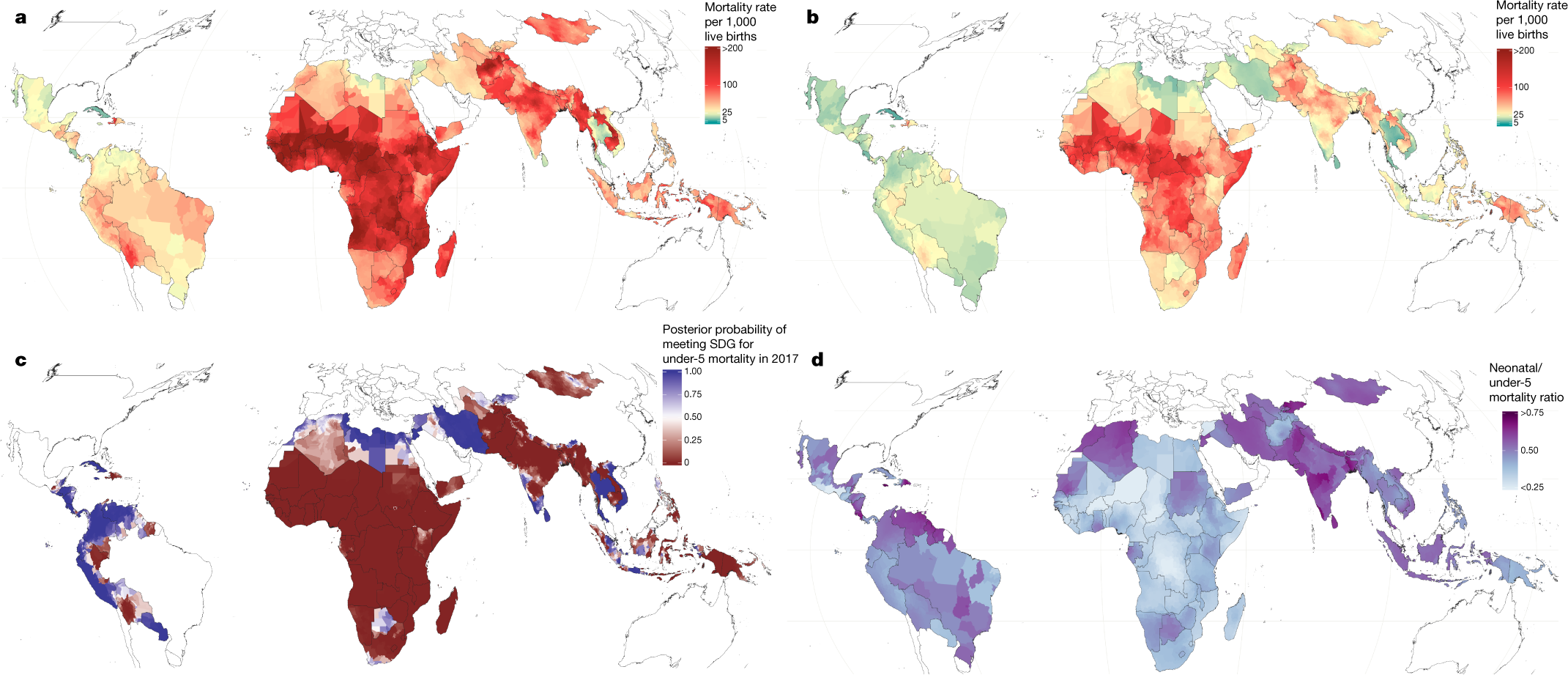Science
Related: About this forumMapping 123 million neonatal, infant and child deaths between 2000 and 2017
The paper I'll discuss in this post is this one: Mapping 123 million neonatal, infant and child deaths between 2000 and 2017.
This paper is open sourced, and anyone who cares can read it in its entirety.
The argument is often made - and it's a very good one - that the carrying capacity of the planet for human beings has been exceeded now for many decades. Thus it might seem that an argument for saving the lives of children under the age of five while consistent with human ethics may conflict with environmental ethics.
I have long argued that this conflict is actually invalid. The countries with the lowest birth rates are precisely those where people are secure in their homes, have sufficient health care, shelter, food, and where the rights of women in particular are most actively supported. The problem of exploding populations is therefore, in my opinion, is actually an issue of poverty and human development.
This is precisely why I personally focus the overwhelming portion of my private scientific interests on clean energy, because without clean energy, we cannot eliminate poverty and advance human development.
From article 25 of the Universal Declaration of Human Rights, approved by the United Nations in 1948, but since honored more in breach than practice:
(1) Everyone has the right to a standard of living adequate for the health and well-being of himself and of his family, including food, clothing, housing and medical care and necessary social services, and the right to security in the event of unemployment, sickness, disability, widowhood, old age or other lack of livelihood in circumstances beyond his control.
Universal Declaration of Human Rights
Note that Article 25 is not about electric cars and McMansions with solar cells on the roofs. Modern liberalism differs from 1948 liberalism; I personally prefer the latter.
From the abstract:
From the introduction:
Progress in child survival also diverges across age groups4. Global reductions in mortality rates of children under 5—that is, the under-5 mortality rate (U5MR)—among post-neonatal age groups are greater than those for mortality of neonates (0–28 days)4,8. It is relatively unclear how these age patterns are shifting at a more local scale, posing challenges to ensuring child survival. To pursue the ambitious Sustainable Development Goal (SDG) of the United Nations9 to “end preventable deaths of newborns and children under 5” by 2030, it is vital for decision-makers at all levels to better understand where, and at what ages, child survival remains most tenuous.
A map:

The caption:
We live in a country where children are kept in cages for no "crime" other than their race. We are beneath contempt.
This is probably one of the most important scientific papers in terms of ethical import I've read in a long time, and I read a lot of papers.
Have a nice weekend.